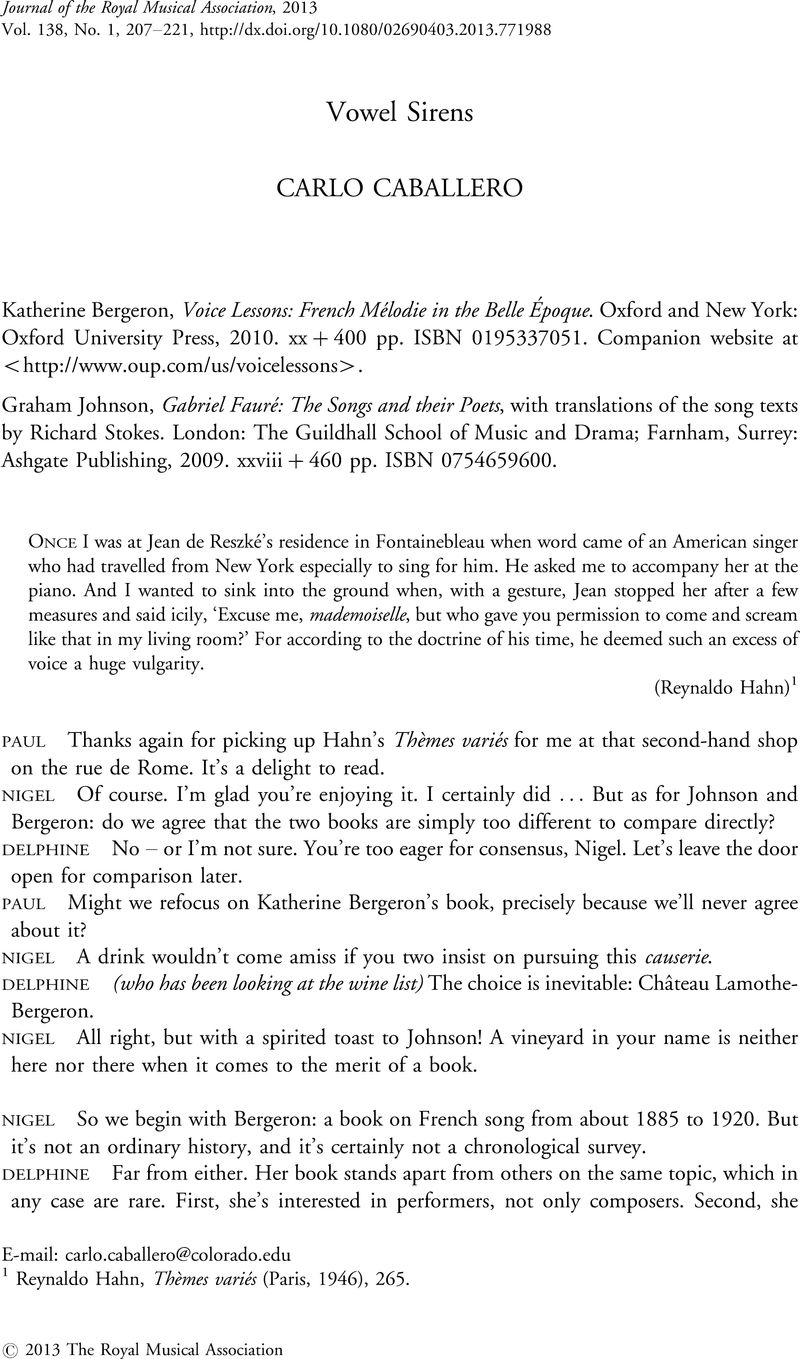
1 Reynaldo Hahn, Thèmes variés (Paris, 1946), 265.
2 Bergeron reproduces the illustration (an engraving) of Marage's ‘sirène à voyelles’ (her Figure 2.11) from a book Marage published around 1911. But Marage seems to have developed the ‘vowel siren’ a decade earlier. See Notice sur les titres et travaux scientifiques de M. le Dr Marage (Paris, n.d.), where in ‘Théorie de la phonation des voyelles’ Marage refers to the creation of moulds of the oral cavity and a related presentation of them to the Société de Biologie in 1899. A picture of these strange moulds, clearly the prototypes for the finished vowel sirens, and several other images of the machine (including Bergeron's Figure 2.11) appear across pages 47–51. This undated book, on internal evidence, was published between 1900 and 1902. Another, different photograph of the vowel siren appears in a 1906 summary of Marage's recent work, Notice sur les travaux scientifiques de M. le Dr René Marage, 2 eappendice, 1904–1907 (Paris, 1907), 12 (Figure 1). These and other publications by Marage may be found at the digital library of the Bibliothèque Interuniversitaire de Santé, <http://www.biusante.parisdescartes.fr/histmed/medica.htm> (accessed 14 March 2013). Curiously, the work Marage was doing on different forms of deafness at this time (‘Differéntes sortes d'otites scléreuses’, Notice sur les travaux, 21–2) could have helped diagnose the malady Fauré began to suffer in the same decade.
3 Camille Saint-Saëns, ‘La question de l'E muet au double point de vue littéraire et musical’, Le Figaro, 19 August 1904.
4 Nigel may be thinking of one of Vivian's fine paradoxes in ‘The Decay of Lying’; see Oscar Wilde, Intentions (London, 1942), 7–47.
5 Hahn, Thèmes variés, 179–82. ‘Mélodies de salon’ is the first section of the chapter entitled ‘De ci de là’.
6 For the reader's reference, here is a list of the songs and song cycles Bergeron analyses in detail: ‘Une sainte dans son auréole’, ‘Le parfum impérissable’ and La chanson d'Eve by Fauré; ‘Surgi de la croupe et du bond’ and Histoires naturelles by Ravel; ‘Le balcon’, ‘La flûte de Pan’, ‘Éventail’ and two of the Fêtes galantes of 1904 by Debussy; and ‘Les heures’ by Chausson.
7 See the dance for the flute-girls in Act 3 of Pénélope (vocal score, pp. 214–18).
8 Roy Howat, Debussy in Proportion: A Musical Analysis (Cambridge and New York, 1983), 192–3.
9 Paul seems to be talking about bars 24–9 of ‘Cygne sur l'eau’, which contain complete octatonic scales; another octatonic rise begins in bar 30 but breaks off in bar 32. The misprint he points out in the next sentence is in bar 27 in Bergeron's example: the bass note under ‘chaque corolle’ should be a B♮, not a B♭.
10 Charles Panzéra (1896–1976) was the dedicatee of Fauré's last song cycle, L'horizon chimérique (1921), and gave its première. As a young man in the late 1930s, Roland Barthes had voice lessons with Panzéra.
11 Quoted in Carlo Caballero, ‘Charles Panzéra’, ARSC Journal, 25 (1994), 226–33 (p. 229).
12 Barbara Meister, Nineteenth-Century French Song: Fauré, Chausson, Duparc, and Debussy (Bloomington, IN, and London, 1980). Translations of this repertoire by Richard Stokes may be found in his other collaboration with Graham Johnson, A French Song Companion (Oxford and New York, 2002).
13 Graham Freeman, ‘“It Wants All the Creases Ironing Out”: Percy Grainger, the Folk Song Society, and the Ideology of the Archive’, Music and Letters, 92 (2011), 410–36 (p. 433).
14 Marian Wilson Kimber, ‘The Peerless Reciter: Reconstructing the Lost Art of Elocution with Music’, Performance Practice: Issues and Approaches, ed. Timothy D. Watkins (Ann Arbor, MI, 2009), 202–23.